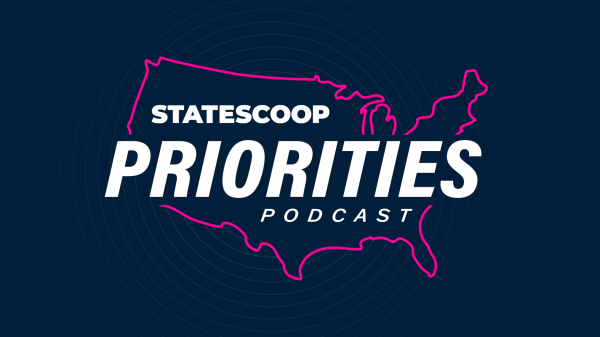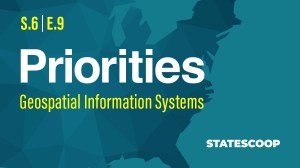
States look to framework data layers to standardize GIS efforts
When it comes to geospatial data, state government should be the one to standardize and coordinate.
A mantra that NSGIC (the National States Geographic Information Council) uses a lot is build once, use many, Gene Trobia, the former Arizona state cartographer, says on the latest episode of StateScoops GIS Addressed podcast.
Through standardization of framework data layers data elements that make up essential pieces of a map state governments can work with local governments to funnel data up to federal agencies like the Census Bureau and U.S. Department of Transportation. This model works well, Trobia says, because local governments often have the best data around, despite the fact that it doesnt always fit into the same standardization mold.
State government is in a great position to standardize and integrate that data, Trobia says. The feds, have, in a lot of cases, developed federal standards so the states have a target so that data can be standardized and cross a lot of boundaries and it just doesnt end at your city, county or state line.
One of the most recent opportunities where framework data layers have made an entry into the daily lives of state and local government initiatives came in 2015 with a revitalized effort to create a national address database from the U.S. Department of Transportation.
I think addresses are just the most current implementation that shows why framework data can be really important and make a difference to all kinds of organizations, Trobia says.
The Federal Geospatial Data Committee, which coordinates framework data layers at the federal level, authorized addresses as a framework data layer in 2011.
Theyre working extensively with state, local, tribal stakeholders to develop a system that gets into the whole concept of build once and use many, Trobia says. How can we take the best, most usable data and integrate it into regions and states and standardize it, and how can it be fed to really be a cost-beneficial way for federal agencies to use that data?”
On the podcast:
- Gene Trobia, researcher, Arizona State University (former Arizona state cartographer)
- Jake Williams, associate publisher and director of strategic initiatives, StateScoop
Things to listen for:
- Framework data layers originated from an effort to reduce replication and reproduction of GIS data at the federal level, but eventually evolved into an effort to create and maintain the National Spatial Data Infrastructure.
- NSGIC sits on, and actively participates in the Federal Geographic Data Committee.
- Its not just government that benefits from a standardized data structure. The private sector actively participates in the FGDC and National Geospatial Advisory Committee as well.
- Since the 2015 effort to revive the National Address Database, agency officials at the federal and state and local level have pressed on, despite the fact that the effort has not been officially financially supported by Congress or the federal government.
- Through the use of framework data, GIS officials can help make data more usable and visual to non-GIS practitioners, Trobia says.
GIS Addressed is StateScoop and the National States Geographic Information Councils podcast about the role of geographic information systems in government.
In addition to listening to this podcast and other StateScoop podcasts on StateScoop.com , you can now subscribe on iTunes and have episodes delivered directly to your podcasts app on your smartphone when new episodes are released.


